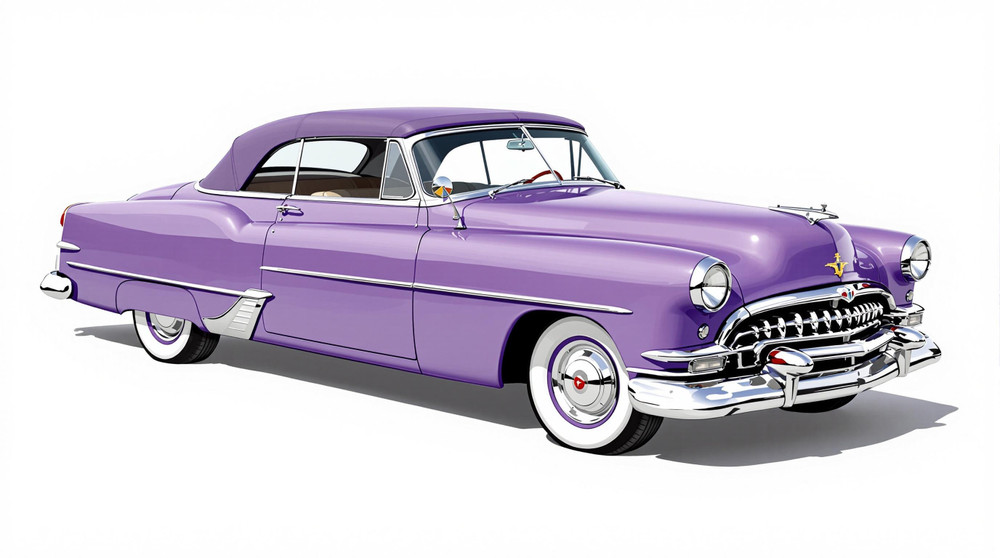Image of 1953 Packard Clipper, Note: These illustrations use artistic license and may differ from actual historical models.
Performance Metrics
Fundamental Metrics
Emotional Appeal
MMP Rating
| Engine Specifications | |
|---|---|
| Engine: | Straight-8 |
| Displacement: | 327 cu in (5.4 L) |
| Horsepower: | 150 HP |
| Torque: | 270 lb-ft |
| Compression Ratio: | 7.0:1 |
| Ignition System: | Battery Ignition |
| Cooling System: | Liquid Cooled |
| Performance Specifications | |
| 0-60 Time: | 15 seconds |
| 1/4 Mile Time: | Estimated 20 seconds |
| Top Speed: | 100 mph |
| Transmission and Drive | |
| Drive Type: | Rear Wheel Drive |
| Transmission Type: | 3-speed manual, 2-speed Ultramatic automatic optional |
| Fuel and Efficiency | |
| Fuel System Type: | Carburetor |
| MPG: | 15 MPG |
| Dimensions and Brakes | |
| Brakes: | Drum Brakes |
| Wheelbase: | 122 inches |
| Weight: | 3,700 lbs |
Note: Specifications for classic cars are given to the best of our ability, considering the limited and variant data available.
Introduction
The 1953 Packard Clipper is a rolling testament to the grandeur of American automotive engineering during the post-war era. Born from the storied Packard Motor Car Company, this vehicle emerged as a symbol of luxury and innovation. In an age where cars were becoming more than just a means of transportation, the Clipper redefined elegance on wheels. Notably, it was during this period that Packard made a significant move by introducing power steering as an option—a feature that would soon become standard in the industry.
Design and Innovation
With its sleek lines and broad, commanding grille, the 1953 Packard Clipper was a head-turner. The car's silhouette was a harmonious blend of aerodynamics and classic styling cues, with chrome accents that accentuated its luxurious appeal. Inside, passengers were cradled in opulence with rich fabrics and top-tier materials that defined comfort and sophistication. For its time, the Clipper introduced technological advancements such as optional power brakes and windows, setting it apart from many competitors. Color options ranged from stately solids to two-tone combinations, with Egyptian Sand and Gulf Green Metallic being among the favorites. The most iconic body style was arguably the Deluxe Touring Sedan, which offered both space and style in spades.
Historical Significance
The Packard Clipper's introduction marked a pivotal moment for automotive design, influencing both aesthetics and functionality in future models. Its balanced proportions and attention to detail set a new standard for what a luxury car should be. The Clipper's legacy is evident in how it elevated the brand's status during a competitive era for American automakers.
Performance and Handling
Under the hood, the 1953 Clipper was powered by a robust straight-eight engine that delivered smooth acceleration and a top speed that commanded respect on the highways of its time. The transition from 0 to 60 mph was achieved with grace rather than aggression, befitting its dignified image. On the road, drivers enjoyed a serene ride quality that absorbed imperfections with ease while maintaining composure through curves and windy conditions. Behind the wheel, one could not help but feel an air of distinction as the engine's hum provided an acoustic backdrop to an unrivaled driving experience.
Ownership Experience
The Clipper served various roles from a daily driver for the well-to-do, to a showpiece at classic car events. Its reliability was commendable for its era; however, like any vintage automobile, it requires dedicated maintenance to preserve its grandeur. Parts can be scarce but are treasured by enthusiasts dedicated to keeping these majestic machines on the road.
Fun Facts
This classic has seen its share of limelight with appearances in movies and driveways of celebrities alike. While not known for breaking speed records, it held its own in terms of sales success during its production years. Common criticisms often revolved around its size and fuel consumption—trivial concerns when weighed against its charm and character.
Collector's Information
In today's market, a well-maintained 1953 Packard Clipper can fetch anywhere from $10,000 to $30,000 depending on condition and originality. With production numbers estimated in the tens of thousands across all styles, they are relatively rare but still attainable for serious collectors. Over time, values have shown appreciation as enthusiasts seek to capture a piece of automotive history.
Conclusion
The 1953 Packard Clipper stands as an enduring icon of American luxury automotive craftsmanship. It is remembered not just for its aesthetic appeal or technological contributions but also for encapsulating an era where cars were crafted with pride and passion. For those who have had the pleasure of owning or experiencing one of these majestic vehicles, the Clipper is more than just a car; it is a cherished artifact from an illustrious chapter in automotive lore.
1953 Packard Clipper Catalog of Parts
 1953 Packard Clipper Accessory Floor Mat - 12"X17"-AC 32Accessory Floor Mat - made of high quality black rubber with molded original emblem. Also designed to be sewn into new carpets. 12"X17", Each
1953 Packard Clipper Accessory Floor Mat - 12"X17"-AC 32Accessory Floor Mat - made of high quality black rubber with molded original emblem. Also designed to be sewn into new carpets. 12"X17", Each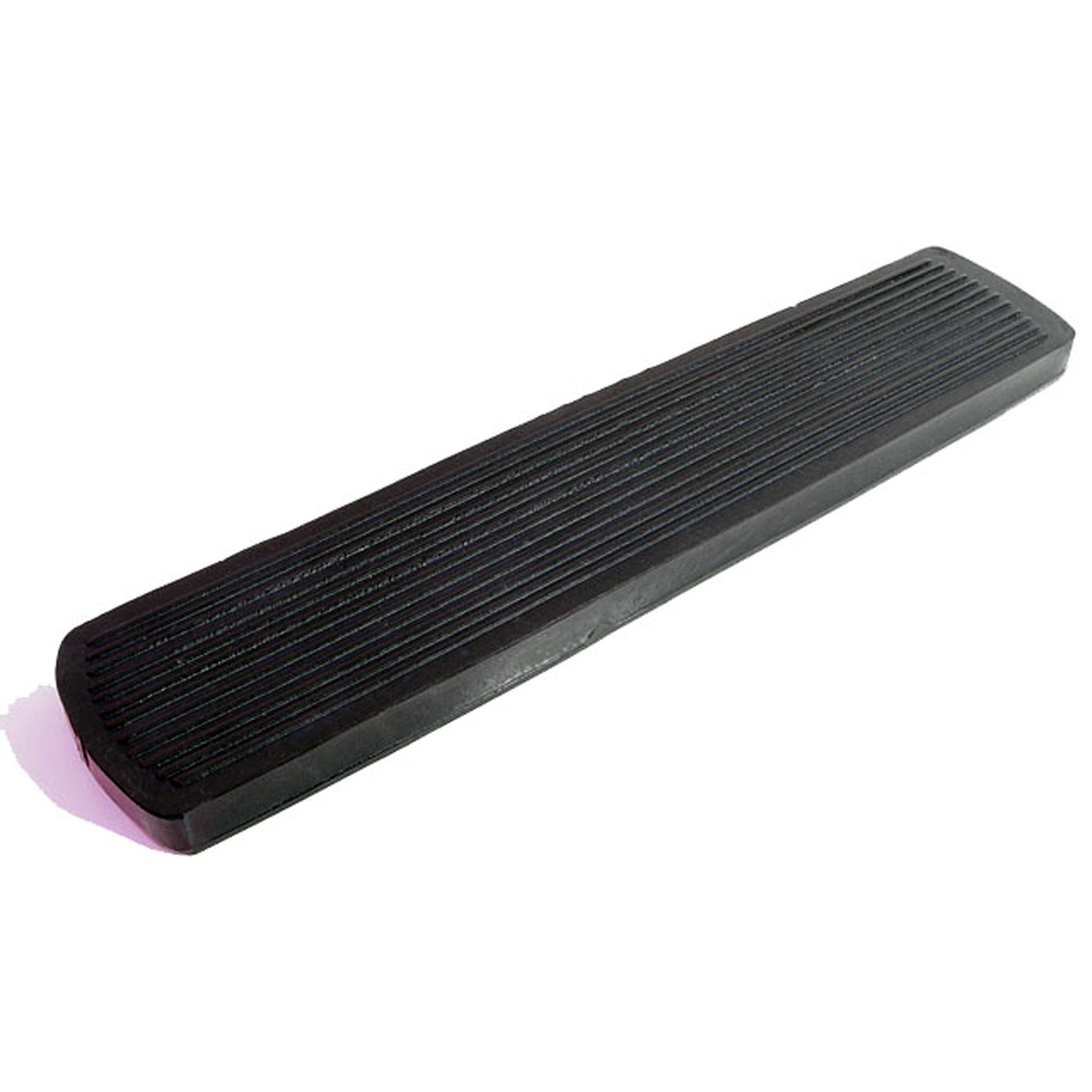 1953 Packard Clipper Accelerator Pedal Pad. 1-7/8" X 9-3/8", Each-AP 16Accelerator Pedal Pad. 1-7/8" X 9-3/8", Each
1953 Packard Clipper Accelerator Pedal Pad. 1-7/8" X 9-3/8", Each-AP 16Accelerator Pedal Pad. 1-7/8" X 9-3/8", Each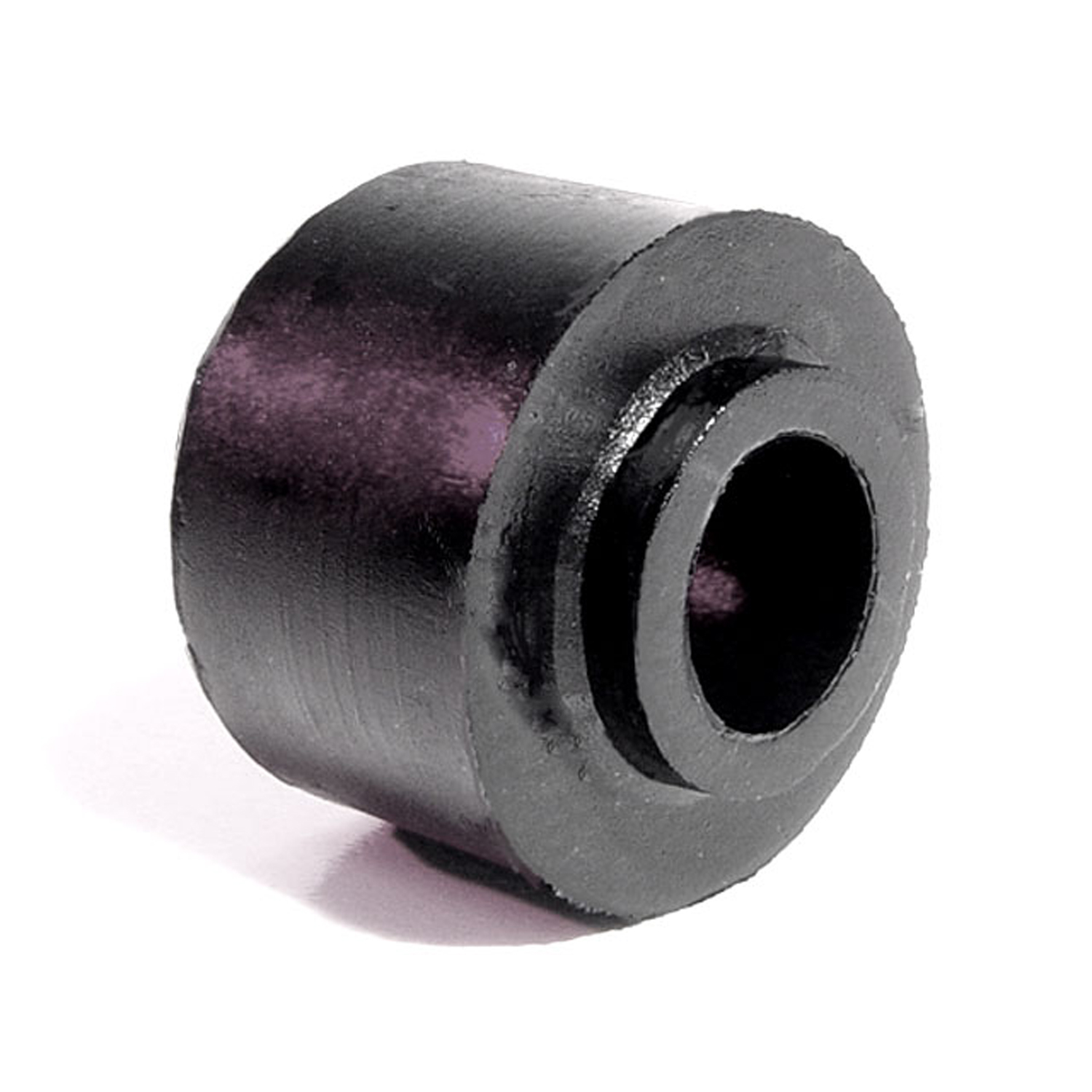 1953 Packard Clipper Shock Absorber Grommet. 1" bottom O.D., 3/4" high-BN 1Shock Absorber Grommet. 1" bottom O.D., 3/4" high., with 7/16" I.D. Each
1953 Packard Clipper Shock Absorber Grommet. 1" bottom O.D., 3/4" high-BN 1Shock Absorber Grommet. 1" bottom O.D., 3/4" high., with 7/16" I.D. Each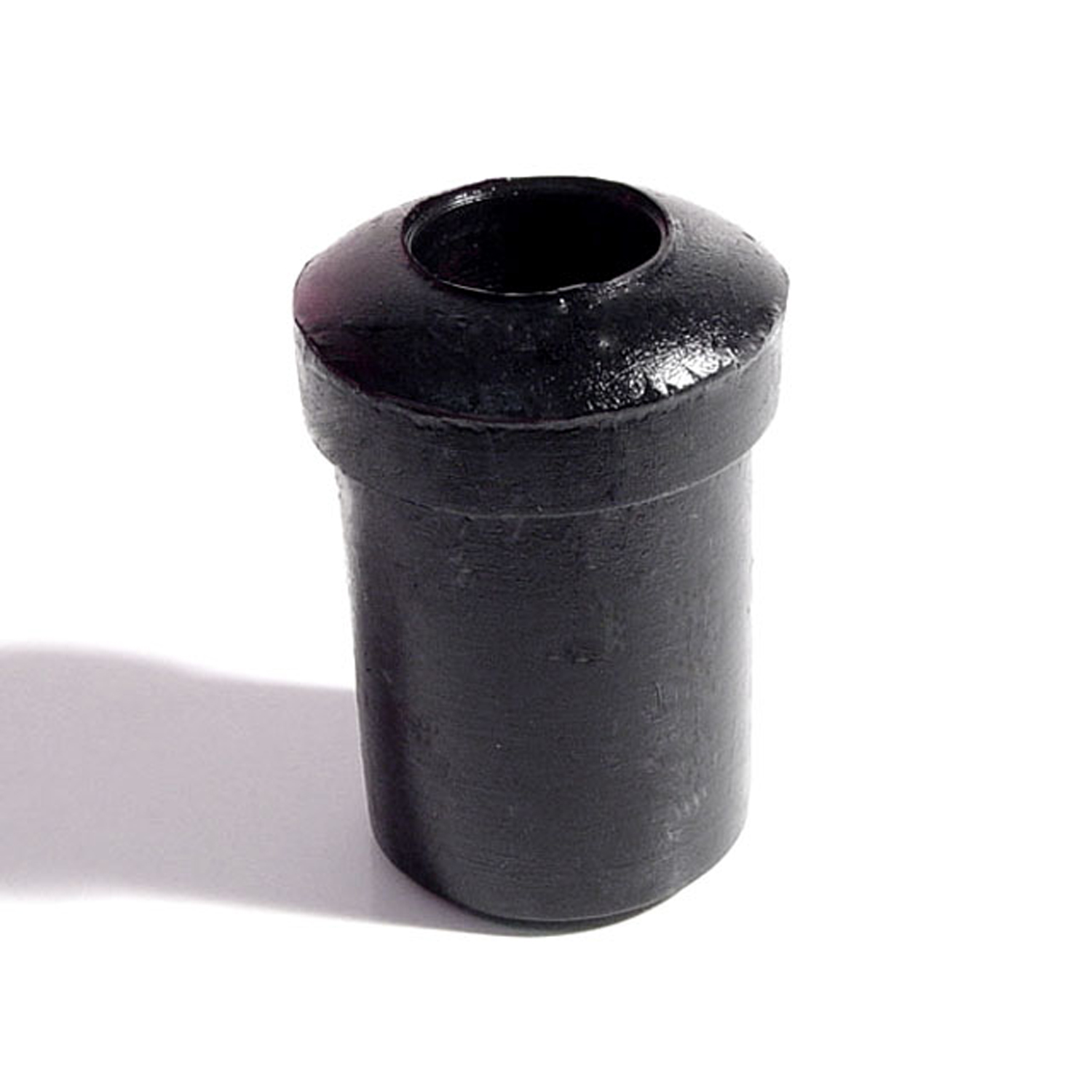 1953 Packard Clipper Spring and Shackle Bushing. 1" bottom O.D-BN 20Spring and Shackle Bushing. 1" bottom O.D. X 1-5/8" high, with 9/16" I.D. Each
1953 Packard Clipper Spring and Shackle Bushing. 1" bottom O.D-BN 20Spring and Shackle Bushing. 1" bottom O.D. X 1-5/8" high, with 9/16" I.D. Each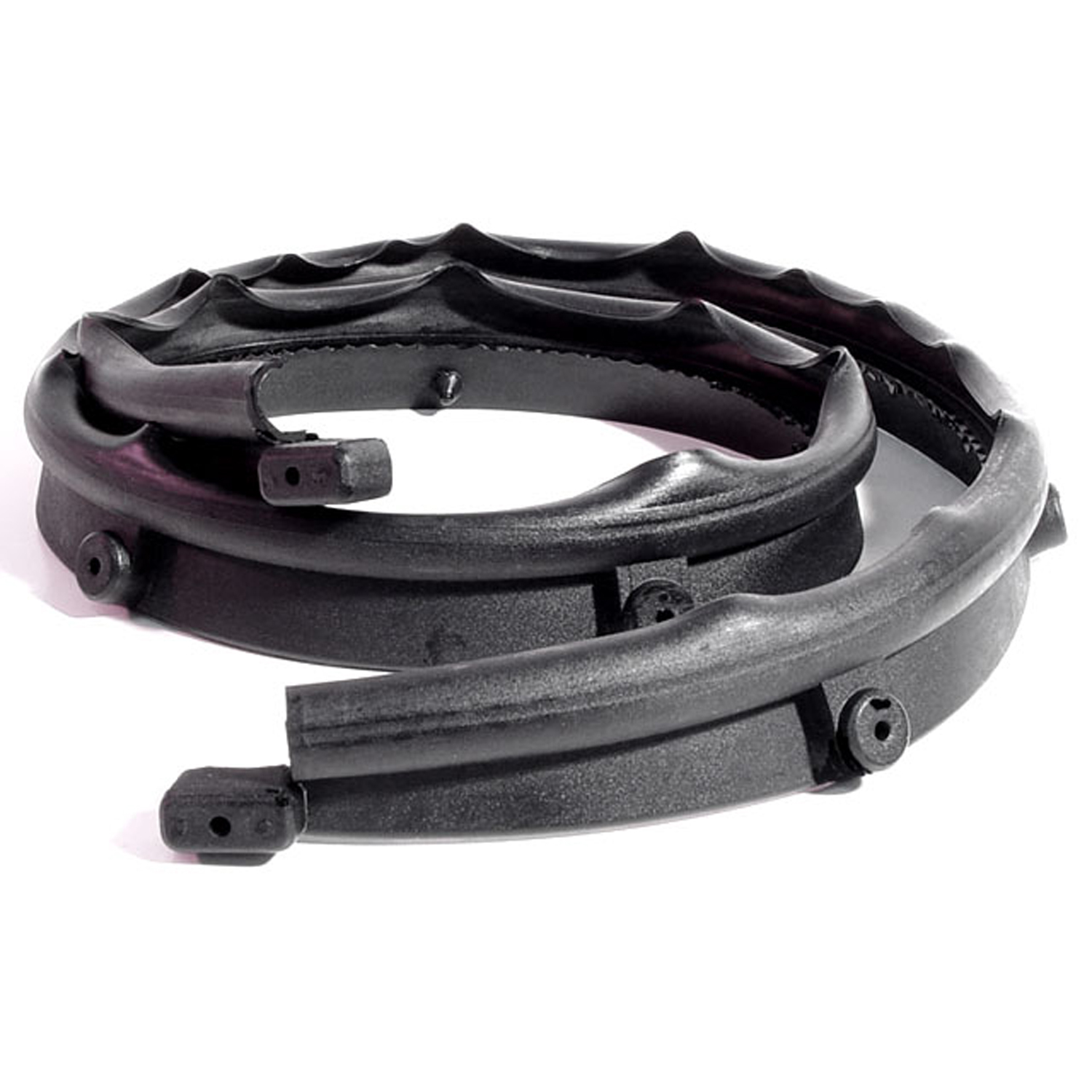 1953 Packard Clipper Cowl and Hood Seal. 43-5/8" long. Each-CS 1Cowl and Hood Seal. 43-5/8" long. Each
1953 Packard Clipper Cowl and Hood Seal. 43-5/8" long. Each-CS 1Cowl and Hood Seal. 43-5/8" long. Each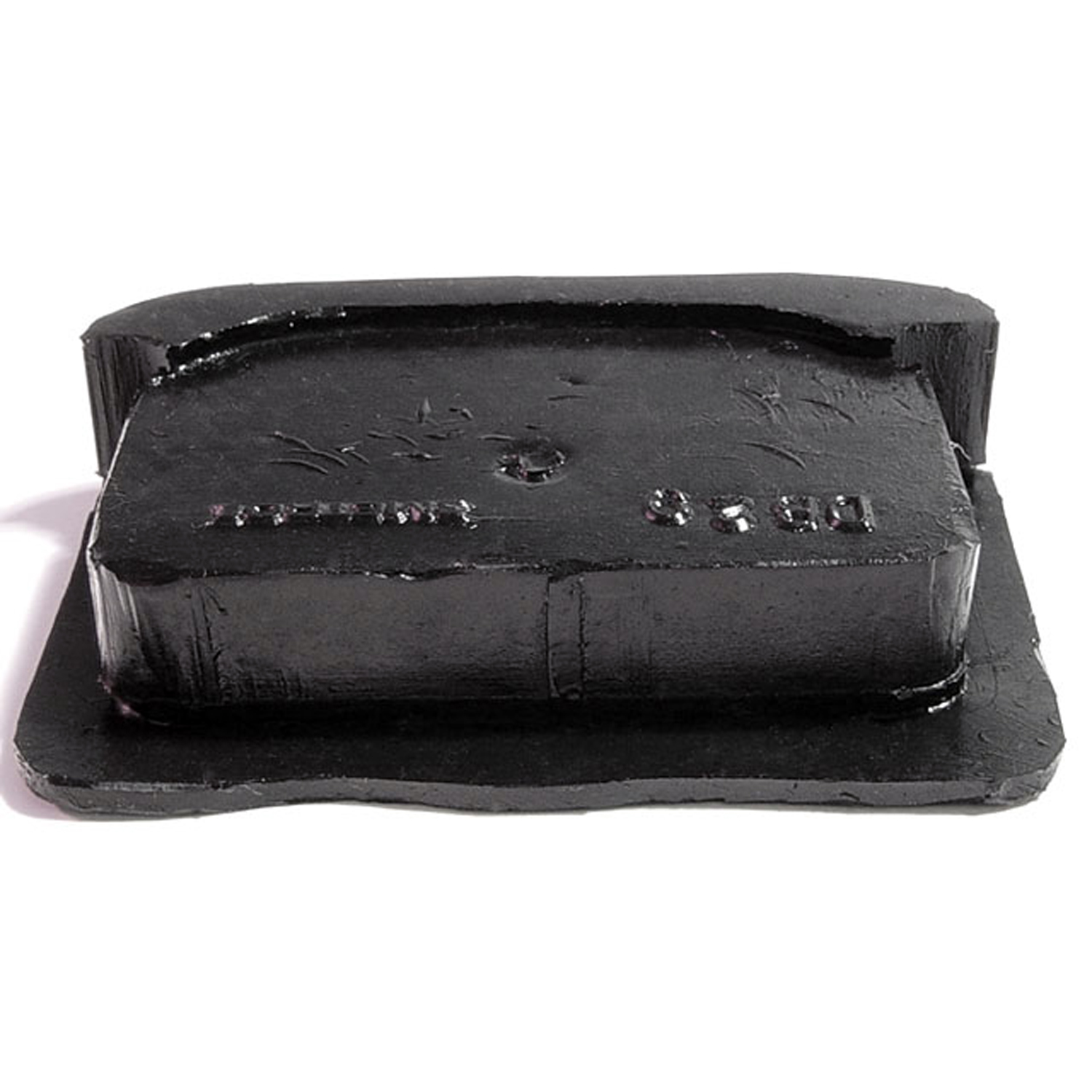 1953 Packard Clipper Door Bumper. 1-3/8" high X 2" wide X 1/2" thick. Each-DB 29Door Bumper. 1-3/8" high X 2" wide X 1/2" thick. Each
1953 Packard Clipper Door Bumper. 1-3/8" high X 2" wide X 1/2" thick. Each-DB 29Door Bumper. 1-3/8" high X 2" wide X 1/2" thick. Each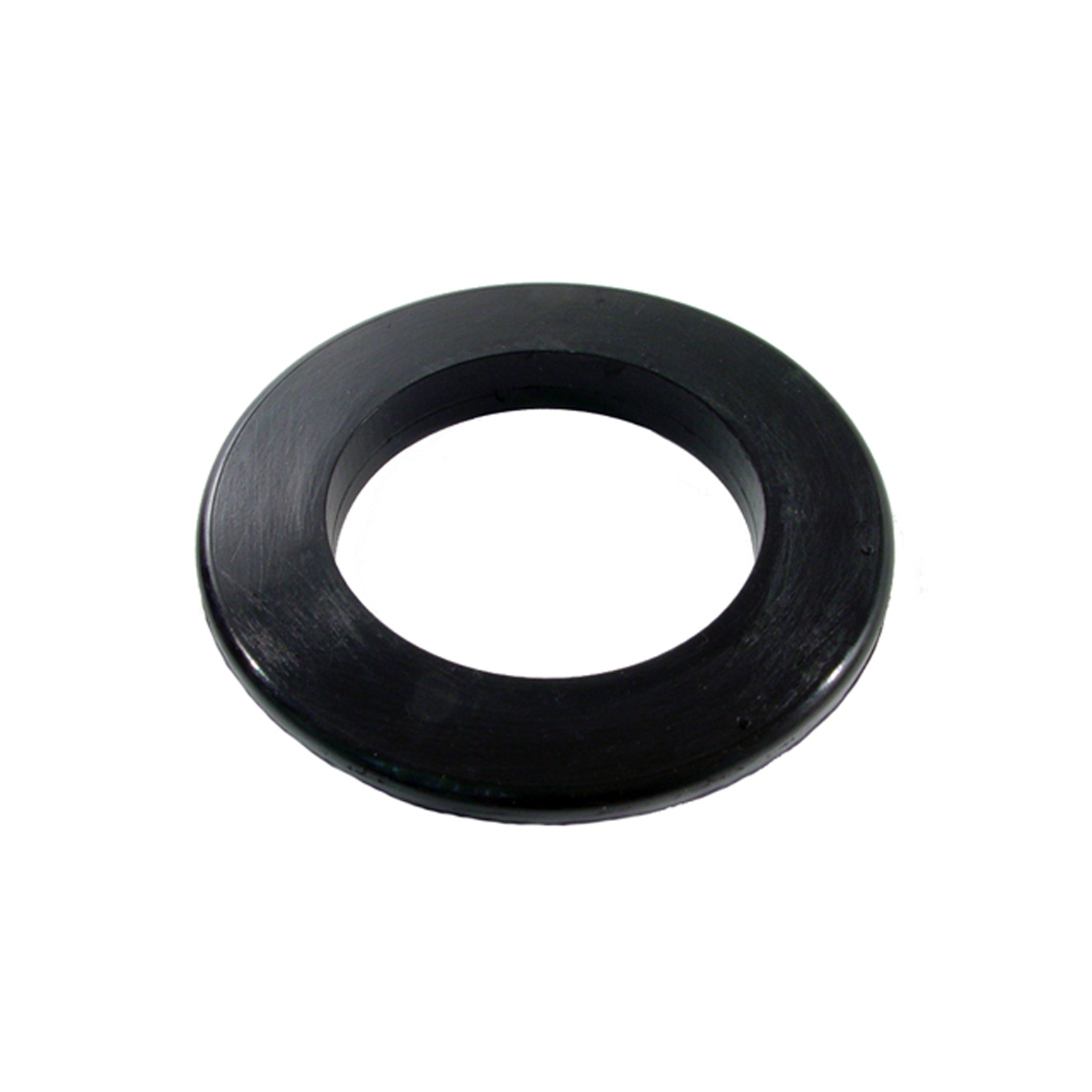 1953 Packard Clipper Gas Filler Grommet. 2-1/2" I.D., 4-1/8" O.D. Each-GF 12Gas Filler Grommet. 2-1/2" I.D., 4-1/8" O.D. Each
1953 Packard Clipper Gas Filler Grommet. 2-1/2" I.D., 4-1/8" O.D. Each-GF 12Gas Filler Grommet. 2-1/2" I.D., 4-1/8" O.D. Each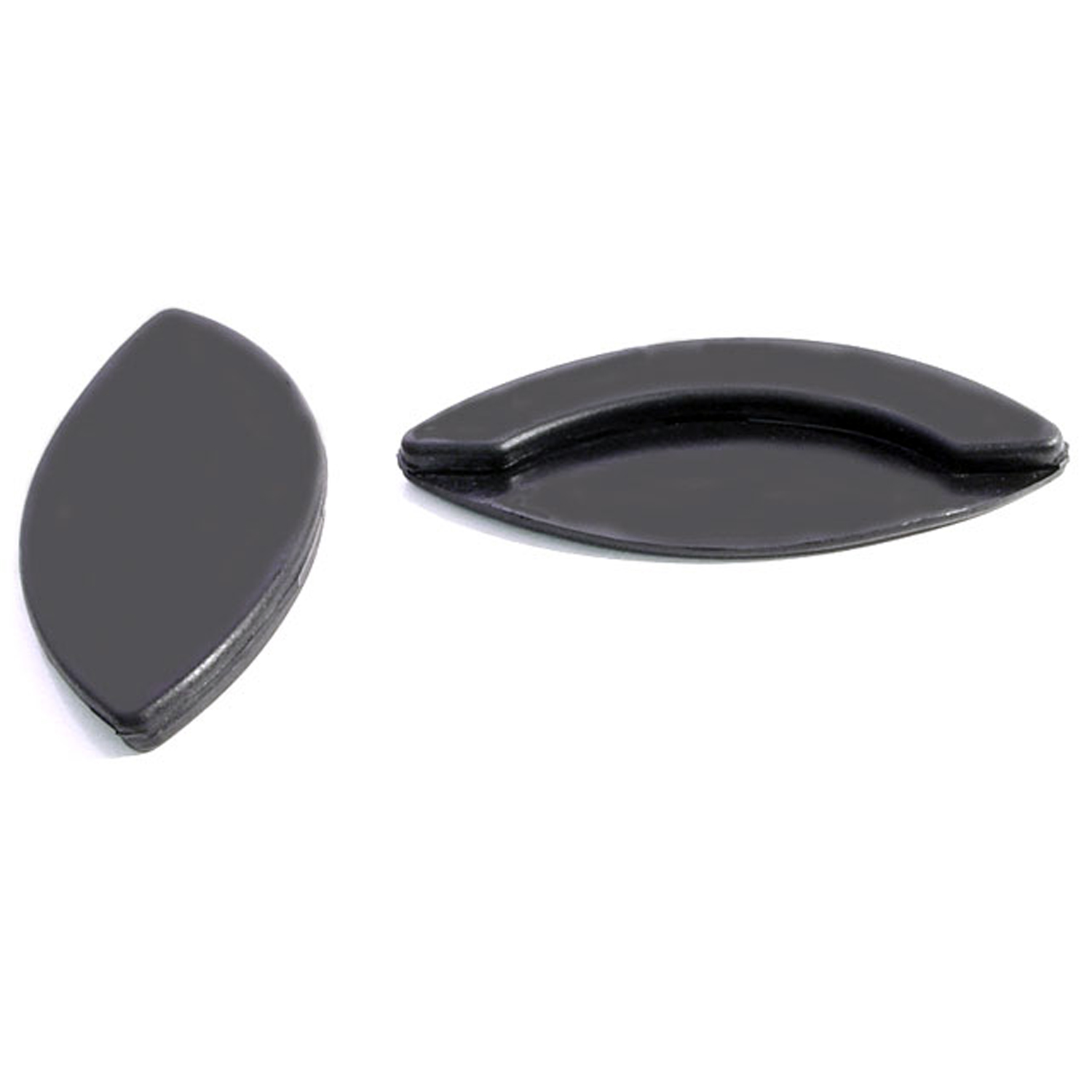 1953 Packard Clipper Hood Corners. 1-3/4" to 2" corner radius-HC 14Hood Corners. 1-3/4" to 2" corner radius. Pad is 3-3/8" long. Pair
1953 Packard Clipper Hood Corners. 1-3/4" to 2" corner radius-HC 14Hood Corners. 1-3/4" to 2" corner radius. Pad is 3-3/8" long. Pair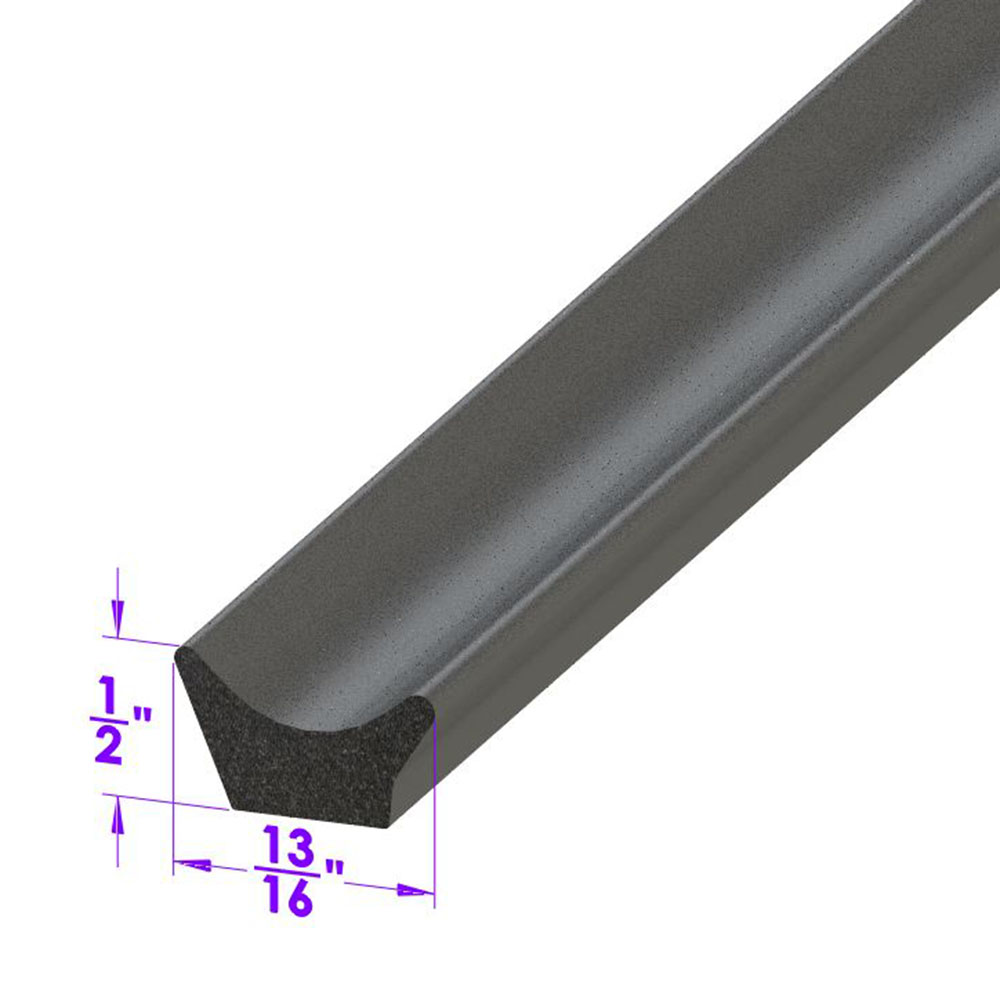 1953 Packard Clipper Door side seal. Same as LP 40, but for a lighter seal-LP 40-ADoor side seal. Same as LP 40, but for a lighter seal. Fits many domestic passenger cars and trucks. Universal seal for street rods and customs. Used in Cobra kit cars as door weatherstrip. Per foot.
1953 Packard Clipper Door side seal. Same as LP 40, but for a lighter seal-LP 40-ADoor side seal. Same as LP 40, but for a lighter seal. Fits many domestic passenger cars and trucks. Universal seal for street rods and customs. Used in Cobra kit cars as door weatherstrip. Per foot.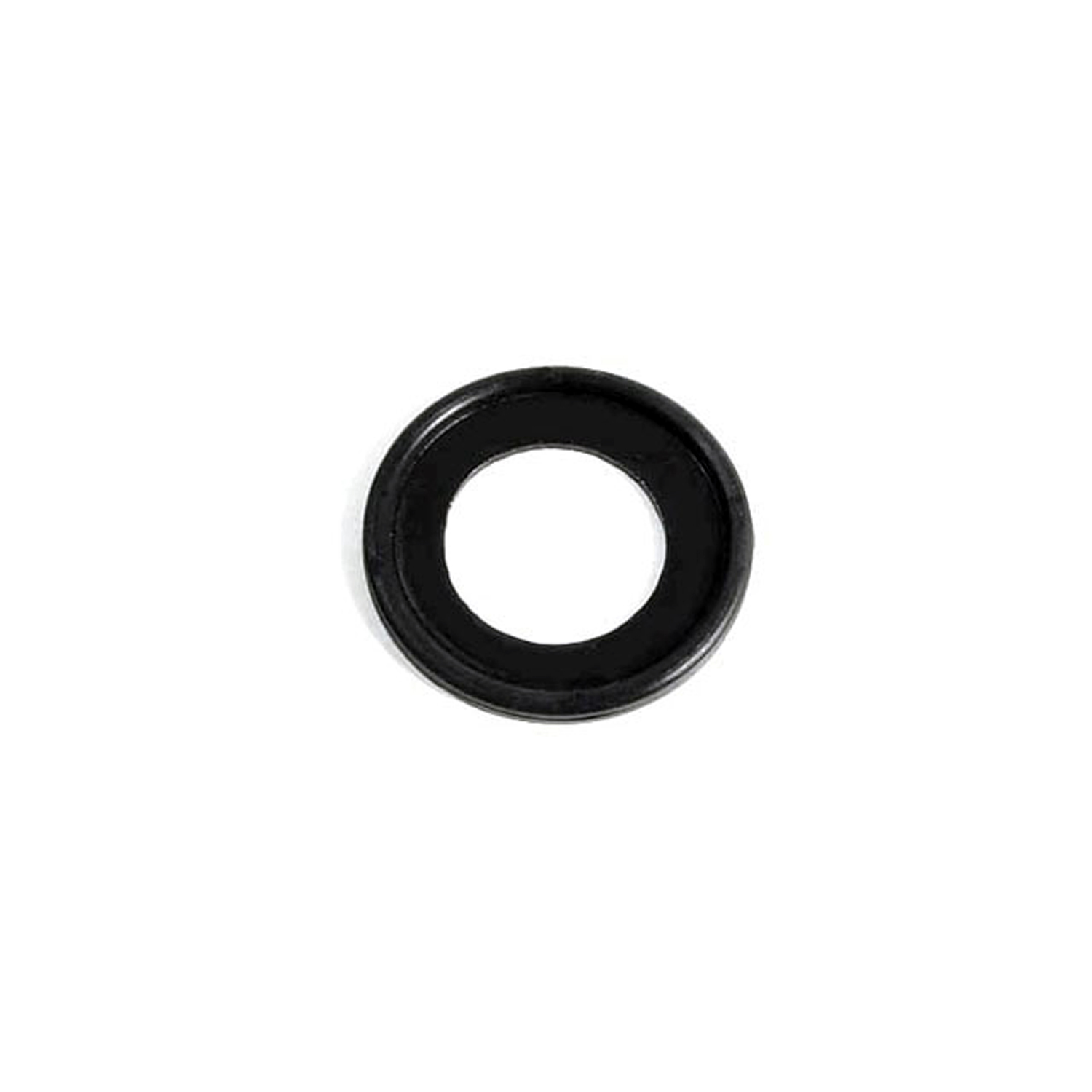 1953 Packard Clipper Antenna Pad. 1-7/8" O.D. Each-MP 854-AAntenna Pad. 1-7/8" O.D. Each
1953 Packard Clipper Antenna Pad. 1-7/8" O.D. Each-MP 854-AAntenna Pad. 1-7/8" O.D. Each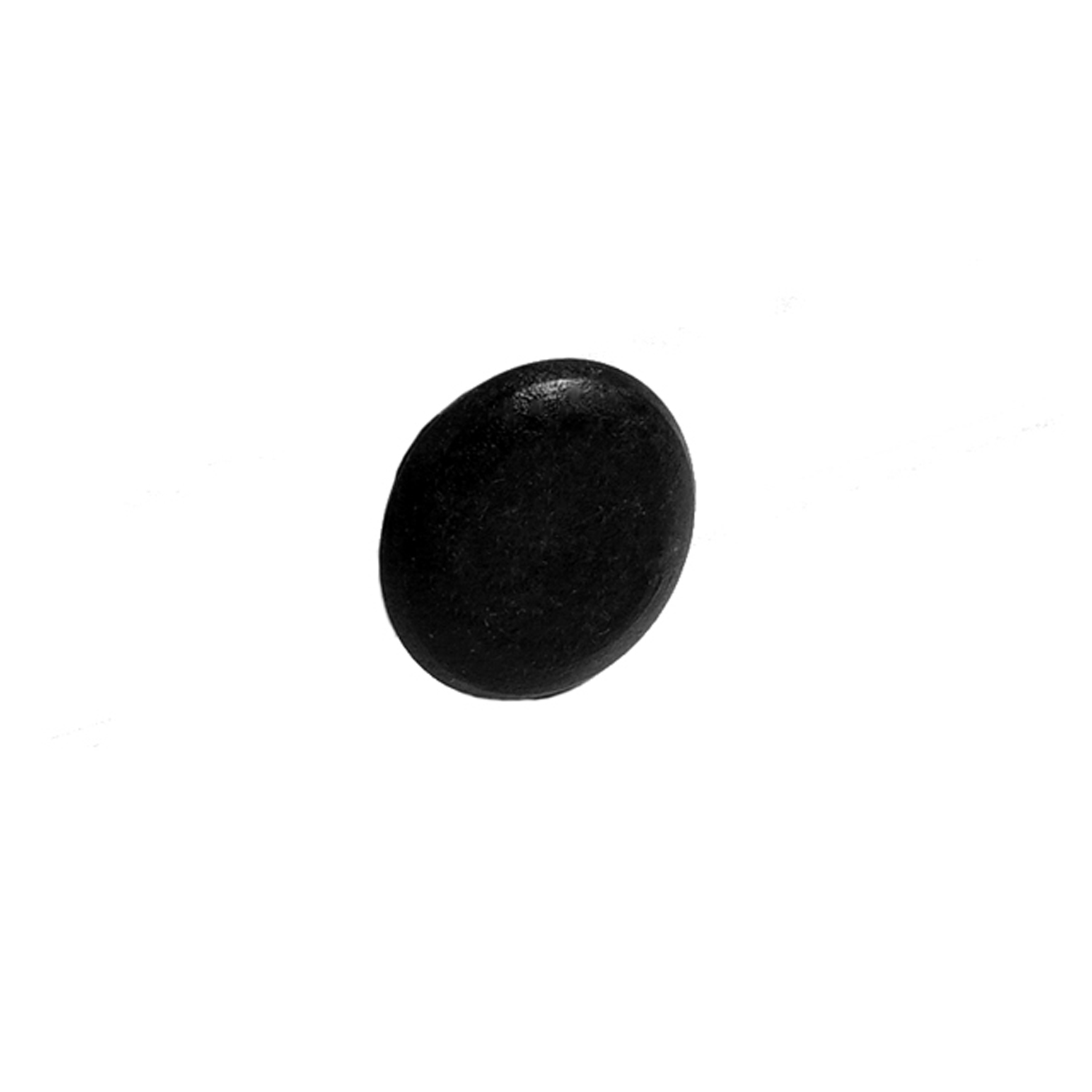 1953 Packard Clipper Trunk Bumper. 3/4" O.D., 5/8" I.D. Each-SB 74Trunk Bumper. 3/4" O.D., 5/8" I.D. Each
1953 Packard Clipper Trunk Bumper. 3/4" O.D., 5/8" I.D. Each-SB 74Trunk Bumper. 3/4" O.D., 5/8" I.D. Each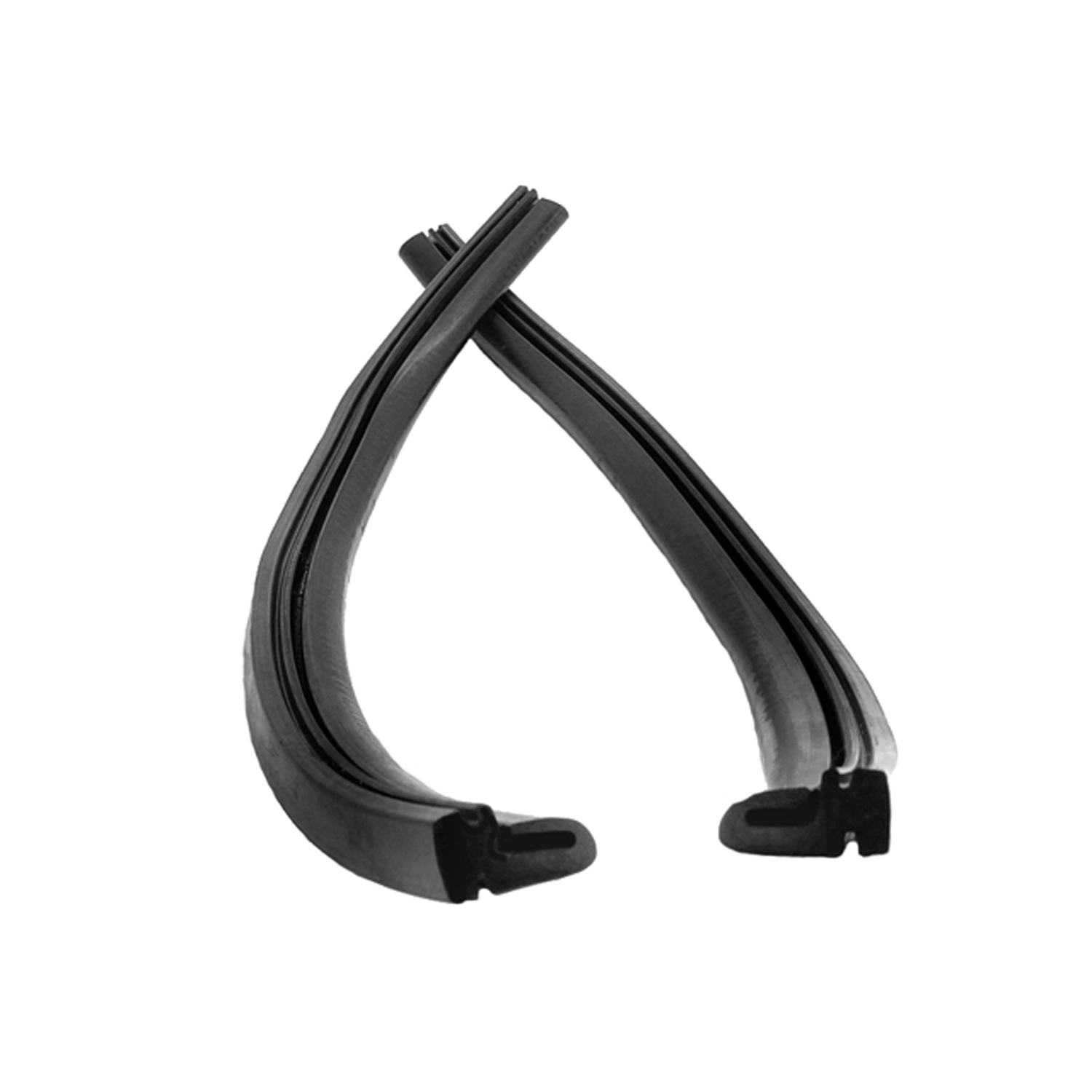 1953 Packard Clipper Rear Roll-up Window Seals, for Hardtops and Convertibles-VS 7Rear Roll-up Window Seals, for Hardtops and Convertibles. For leading edge of rear quarter windows. Two pieces, 17-3/4" long. Pair
1953 Packard Clipper Rear Roll-up Window Seals, for Hardtops and Convertibles-VS 7Rear Roll-up Window Seals, for Hardtops and Convertibles. For leading edge of rear quarter windows. Two pieces, 17-3/4" long. Pair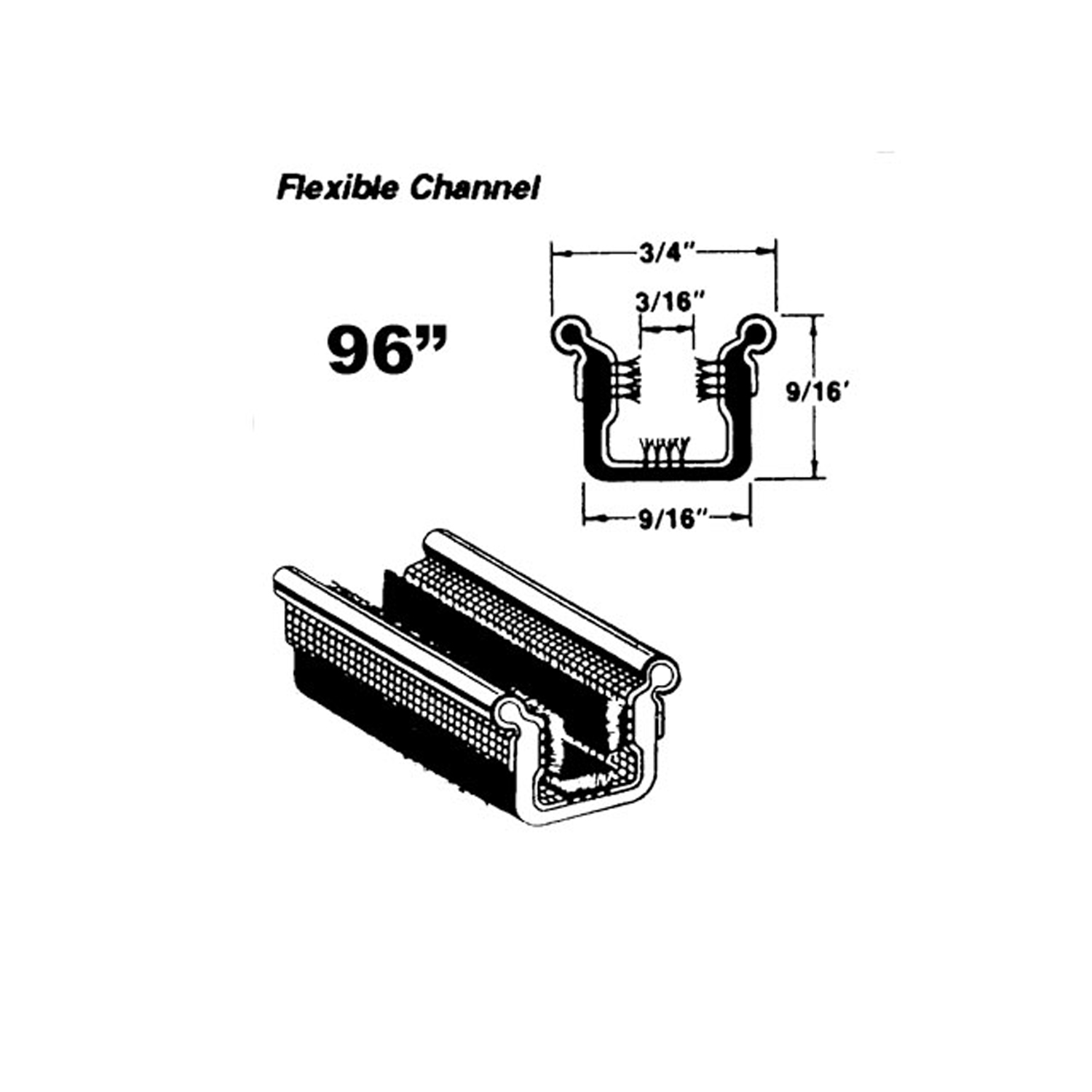 1953 Packard Clipper Flexible window channel-WC 10-96Flexible window channel. Rubber covered with mohair lining and stainless steel bead. 96 in. long. Each. NOTE: $20 special shipping charge applies for domestic orders. Call or email for overseas shipping costs. Part can be sectioned in two or three equal lengths to reduce overseas shipping costs.
1953 Packard Clipper Flexible window channel-WC 10-96Flexible window channel. Rubber covered with mohair lining and stainless steel bead. 96 in. long. Each. NOTE: $20 special shipping charge applies for domestic orders. Call or email for overseas shipping costs. Part can be sectioned in two or three equal lengths to reduce overseas shipping costs.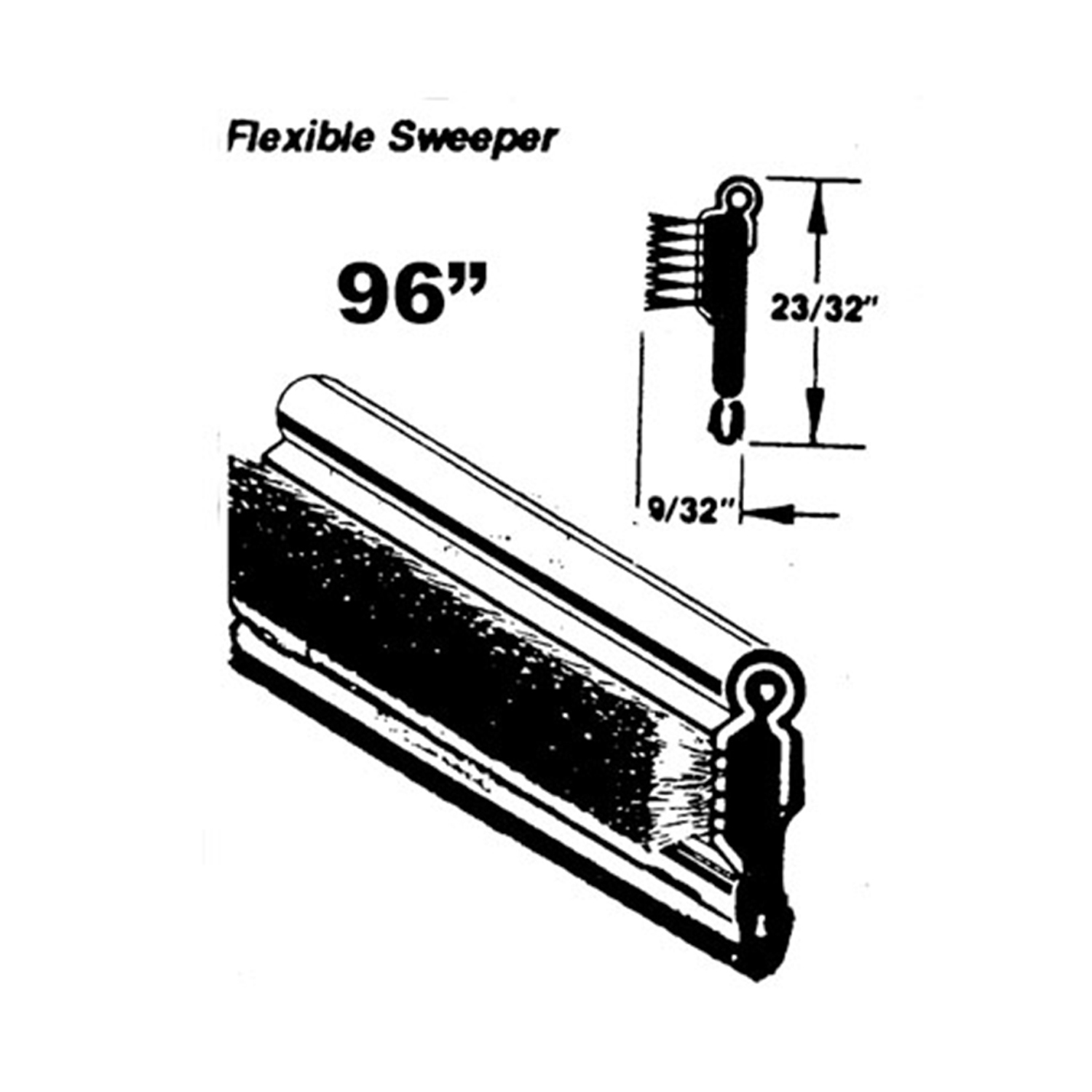 1953 Packard Clipper Flexible window sweeper. Made with stainless steel bead-WC 4-96Flexible window sweeper. Made with stainless steel bead. 96 in. long. Each. NOTE: $20 special shipping charge applies for domestic orders. Call or email for overseas shipping costs. Part can be sectioned in two or three equal lengths to reduce overseas shipping costs.
1953 Packard Clipper Flexible window sweeper. Made with stainless steel bead-WC 4-96Flexible window sweeper. Made with stainless steel bead. 96 in. long. Each. NOTE: $20 special shipping charge applies for domestic orders. Call or email for overseas shipping costs. Part can be sectioned in two or three equal lengths to reduce overseas shipping costs.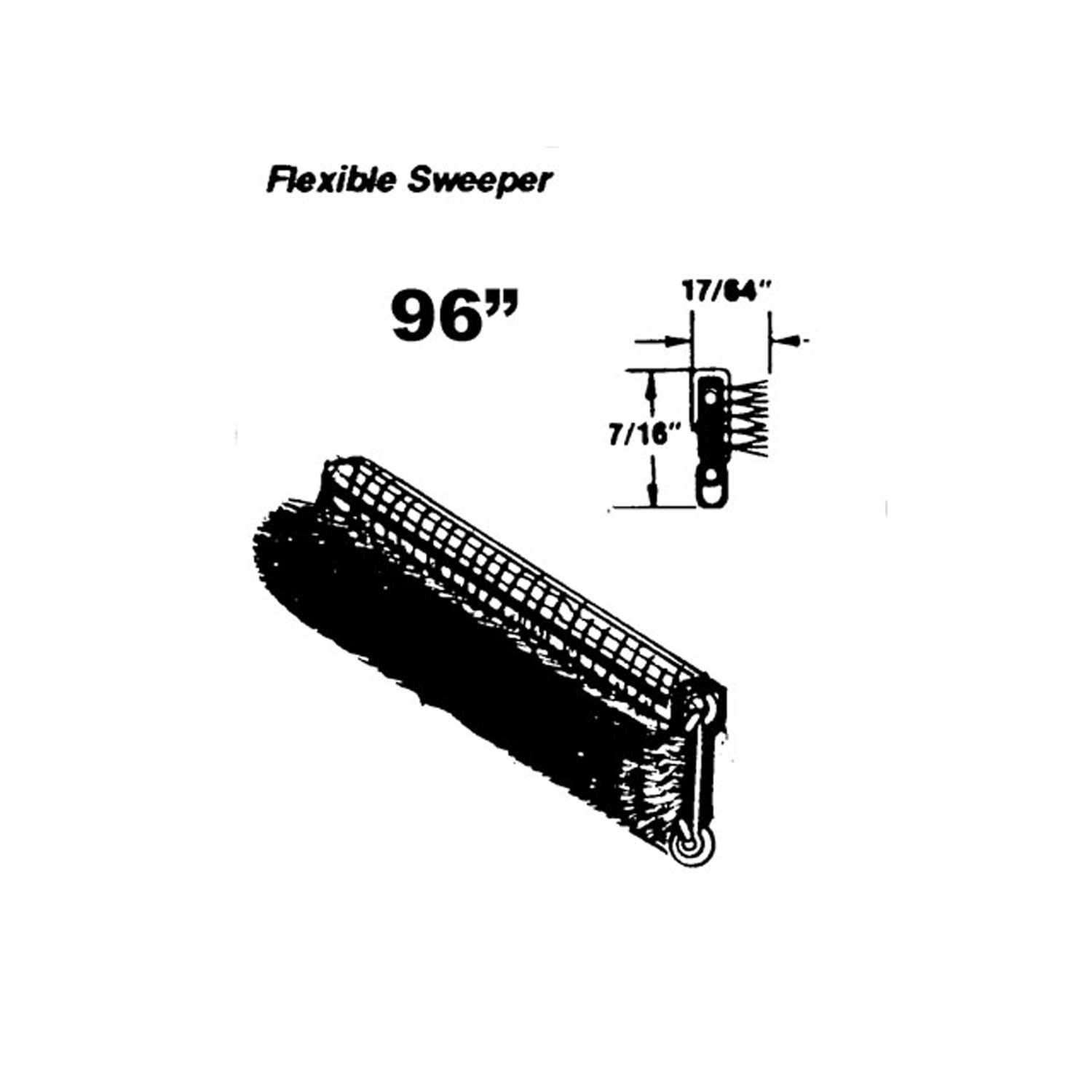 1953 Packard Clipper Flexible window sweeper-WC 5-96Flexible window sweeper. Made with black electro-plated steel. 96 in. long. Each. NOTE: $20 special shipping charge applies for domestic orders. Call or email for overseas shipping costs. Part can be sectioned in two or three equal lengths to reduce overseas shipping costs.
1953 Packard Clipper Flexible window sweeper-WC 5-96Flexible window sweeper. Made with black electro-plated steel. 96 in. long. Each. NOTE: $20 special shipping charge applies for domestic orders. Call or email for overseas shipping costs. Part can be sectioned in two or three equal lengths to reduce overseas shipping costs.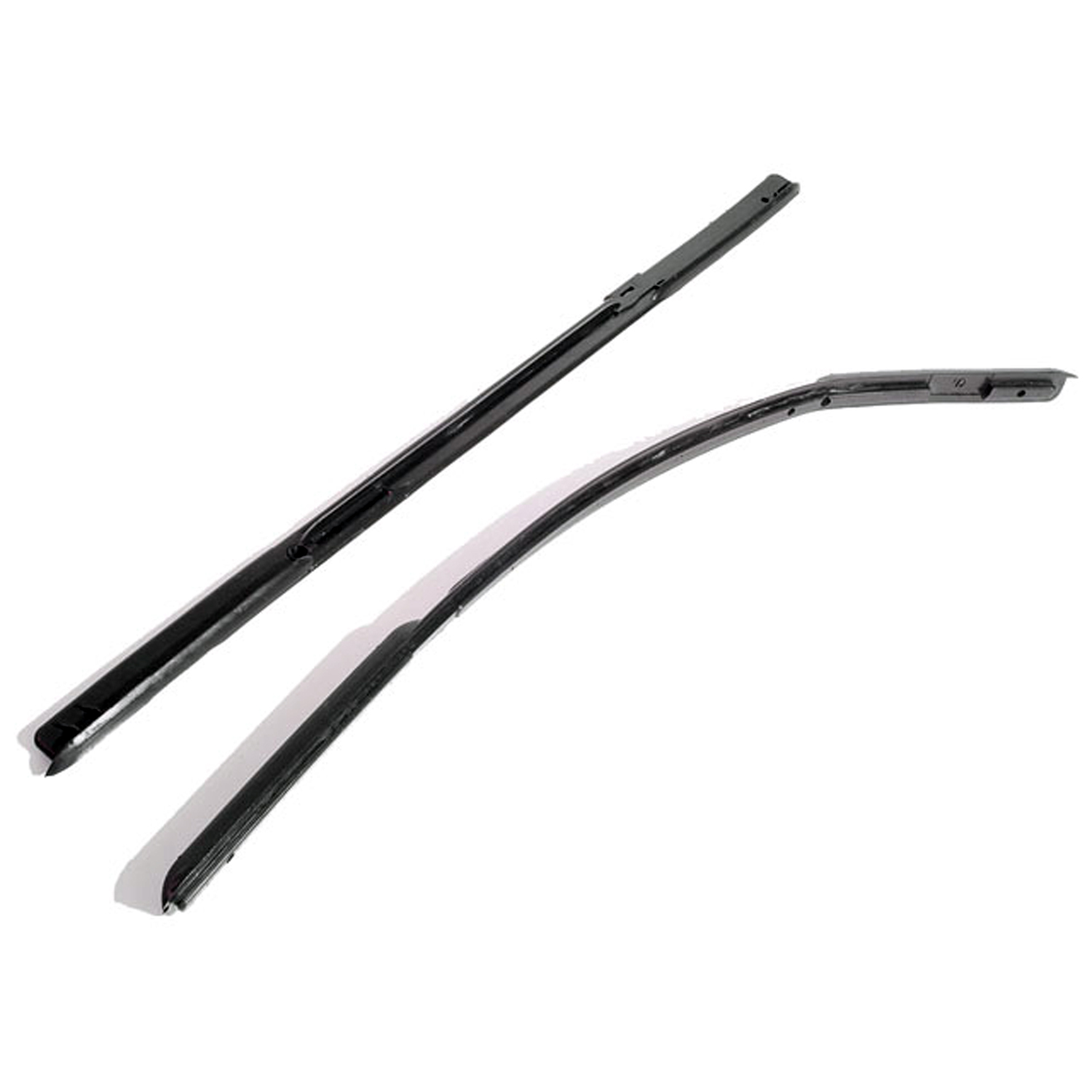 1953 Packard Clipper Vent Window Seal. Pair-WR 2300Vent Window Seal. Pair
1953 Packard Clipper Vent Window Seal. Pair-WR 2300Vent Window Seal. PairWhy Choose Metro?
For over 100 years, Metro Moulded Parts has been the pinnacle of quality in classic car restoration parts. Our commitment to precision and authenticity in every component ensures a perfect fit and an OEM-level appearance.
- Expert Craftsmanship & Quality: Each part is a testament to our dedication to reliability and perfection, crafted from original designs and thoroughly tested.
- Advanced Technology: We use cutting-edge techniques to create flawless, long-lasting parts that surpass others in performance.
- SuperSoft Sponge – The Ultimate Door Seal: Not only are our door seals 30% softer than competitors', but they're also guaranteed to never leak. They effectively reduce wind and road noise, enhancing your classic car's comfort and driving experience.
- Proudly American: Our parts are a product of American craftsmanship, made in the USA with a spirit of excellence and heritage.
- Unrivaled Warranty: We back our products with a 30-year industry-leading warranty, a testament to our confidence in their quality.
Join us in preserving the legacy of classic cars with parts that are crafted for perfection, not just made.

